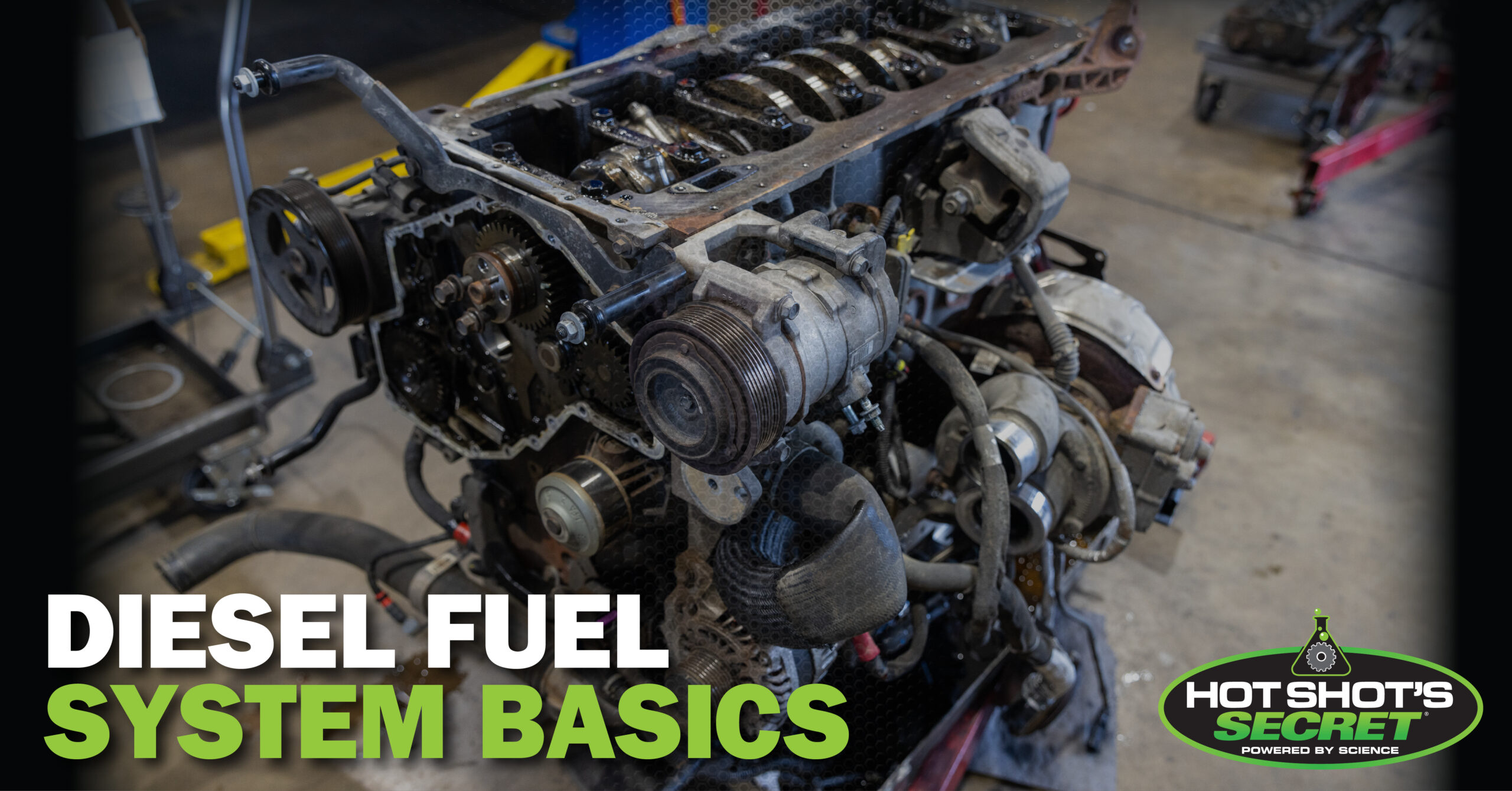
People rely on diesel engines because of their fuel economy and simplified maintenance. Since they don’t have spark plugs, these engines don’t need ignition tuning. In addition to cars and trucks, diesel equipment is key for commercial trucks, trains, barges, boats and heavy machinery like bulldozers, excavators and backhoe loaders.
Diesel systems function differently than other types of internal combustion engines. If you operate diesel-powered equipment for business or pleasure, it’s important to understand the fundamentals of this highly valuable and efficient technology.
How Diesel Engines Work
A diesel fuel system operates via an internal combustion engine (ICE), meaning fuel combustion and ignition occur within the engine. During typical ICE operation in a vehicle, the ignited engine partially converts the energy from the combustion process into work. Expanding combustion gases push a piston, causing the crankshaft’s rotation. This creates movement in a system of gears in the powertrain, propelling the vehicle’s wheels.
A diesel engine fuel system injects a precise amount of pressurized, atomized fuel into each cylinder. Combustion occurs from a mixture of hot compressed air and fuel. Unlike a gas-powered ICE, a diesel engine does not require an electrical spark for ignition.
Key Components of a Diesel Engine
A diesel engine consists of several parts and components:
- Cylinder block and pistons: The cylinder block, which is typically made from cast iron, contains the cylinders for the pistons that convert the energy released during combustion.
- Fuel injection system: This component serves as a diesel fuel delivery system that propels the liquid into the cylinders and controls the injection timing.
- Turbocharger: A turbocharger boosts the air intake pressure, increasing the engine’s efficiency.
- Exhaust system: This system removes the expended fuel-air mixture from the combustion chamber and expels it via the vehicle’s tailpipe.
Diesel Fuel System Components
A diesel fuel system encompasses more than the engine. Other essential components include:
- Fuel tank: While the exact location varies from one make and model to the next, the fuel tank is typically near the rear of the vehicle and under or within the frame. The tank also has a filter screen for removing impurities.
- Fuel pump: Mechanical and electronic transfer pumps help move the fuel from the tank to the injection pump.
- Injection pump: This part takes fuel and pressurizes it up to 40,000 psi, then delivers it to the fuel injectors to atomize before being burned.
- Fuel injectors: These injectors move the fuel into the intake manifold or cylinders. While these systems have traditionally been mechanical, common-rail versions are increasingly popular for on-road applications.
- Fuel lines and fittings: A diesel fuel line transfers the fuel from one area of the vehicle to another. Examples include lines made from heavyweight material for high-pressure applications between the fuel injectors and pump, and lightweight options with minimal pressure.
Diesel Fuel Types and Properties
While diesel fuel and gasoline are refined from crude oil, gasoline undergoes a more comprehensive refining process to make it thinner than diesel. That consistency enables it to evaporate more slowly. The higher energy density makes diesel the preferred choice for bigger, heavier vehicles and machinery.
Different types and grades of diesel include:
- #1 vs. #2: #2 is the most common diesel. The #2 version has higher lubrication properties and lower resistance to gelling in cold weather. #1 diesel fuel is less likely to gel, but has a lower energy content and is typically more expensive.
- Winterized: This blend of #1 and #2 diesel fuels or treated #2 that offers the advantages of both grades in cold temperatures.
- Off-road (red) vs. highway diesel: Off-road diesel is dyed red to distinguish it from on-road diesel, which is subject to various highway taxes.
- Biofuels and alternative diesel fuels: Biofuels are liquid fuels generated from renewable biological sources. Biodiesel, which comes from animal fats, vegetable oils (plants and recycled restaurant grease, produces fewer harmful emissions than conventional diesel fuel. It can also be adapted for diesel engine use without an expensive conversion process. It’s important to consult your owner’s manual to determine whether a diesel fuel blend is right for your vehicle.
Maintenance and Troubleshooting
A diesel engine fuel system requires regular service to keep it running smoothly, reduce the risk of costly repairs and maximize its life span. Follow standard preventive maintenance and troubleshooting steps for diesel-powered vehicles:
- Keep the engine oil topped off and change it regularly to prevent engine damage.
- Check all vital fluids, including the coolant, to reduce the likelihood of difficult starting.
- Change all the filters, including the fuel filter, at the recommended intervals.
- Choose the appropriate diesel fuel for your vehicle.
- Use a diesel anti-gel additive when temperatures dip below freezing to prevent diesel gelling.
- Add a fuel additive to improve diesel quality. Diesel is less refined than gasoline, raising the cetane and increasing lubricity aids to maximize performance.
Hot Shot’s Secret Can Help Keep Your Diesel Fuel System Clean
At Hot Shot’s Secret, we offer a wide assortment of high-quality diesel additives to prolong your diesel system’s life span and help prevent mechanical failures. Our products are backed by science and come with a money-back guarantee. Check out our selection and order online today.
